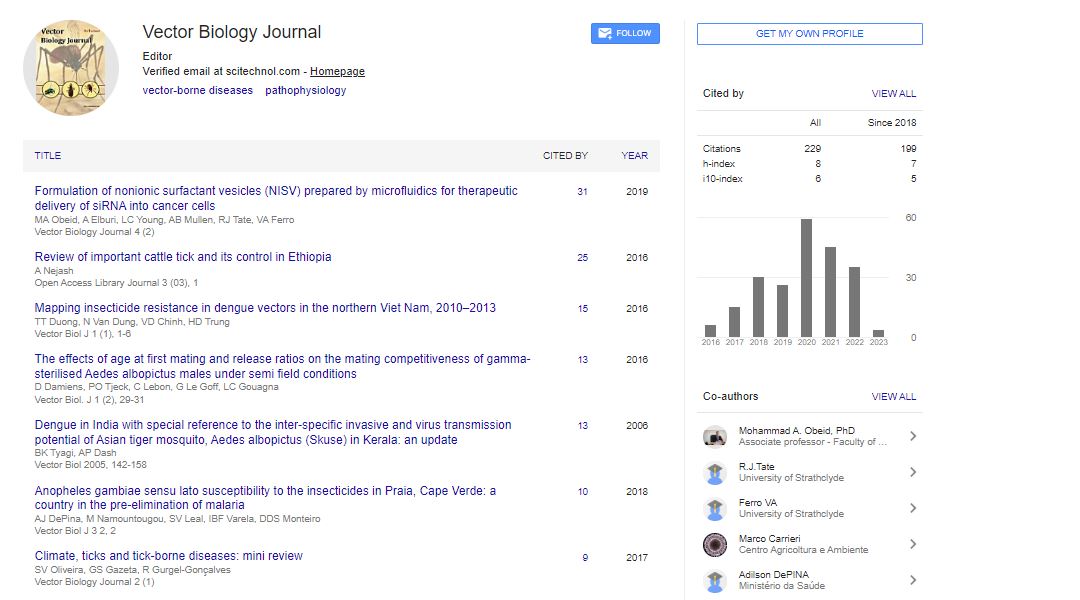The effect of antioxidant and filler type on diltiAzem hydrochloride sustained release tablet matrices containing polyethylene oxid
Saeed Shojaee, Faezeh Majzoubi and Ali Nokhodchi
School of life and science, UK
: Vector Biol J
Abstract
Introduction: Polyethylene oxide (PEO) is one of the hydrophilic polymers that have been extensively used to prepare sustained and modified release dosage forms1. The objective of this study is to investigate the effect of vitamin E succinate and different fillers (mannitol and DCP) on release rate stability of highly soluble drug diltiazem HCl containing Polyethylene oxides. Experimental Methods: Diltiazem hydrochloride was obtained from Elan Drug Technologies. PEO grade 303, Vitamin E, Mannitol and dicalcium phosphate dehydrate were obtained from Merck, Germany. Diltiazem HCl:PEO with a ratio of (1:1) was prepared and Matrix tablets with target weights of 240 mg for pure samples, 242.4 tablets containing Vit E and 300 mg for filler tablets were prepared by the compression of the above mixtures at 1500 psi. In order to investigate the effect of different filler types diltiazem HCl : PEO : filler with a ratio of (1:1: 0.5) was prepared and mixed .Then the mixture was compressed at the same conditions as described above. Drug release was determined by dissolution testing for these tablets. Dissolution testing was performed for the non-aged polymer as the control. These were considered as zero (0) week. The USP paddle method (Erweka, Germany) was used to monitor the dissolution profiles of diltiazem HCl. The dissolution medium was 900 ml distillate water equilibrated to 37 ºC + 0.1 ºC and the paddles were rotated at 100 rpm. Viscosity of samples also was done using the Dr. Schleuniger® Pharmatron. Results and Discussion: The effect of storage conditions showed that the release rate of the drug was significantly increased from tablets that were stored for longer periods at 40 ◦C. That is to say, drug release was faster at longer (8 > 4 > 2 > 0 weeks) Figure 1(A). The increase in drug release is expected to be due to oxidative degradation Primarily in the amorphous region of the polymers1. The results in Figure 2 (B) also showed that there was a significant decrease in the drug release rate of the formulations that contained all concentrations of Vit E used (1% w/w). In other words, the use of Vit E PEO decreased the rapid drug release occurring as a result of the storage time (2, 4, 8 weeks) at 40◦C. The reason behind this phenomenon could be when Vit E was dispersed in the PEO containing drug, it delayed the penetration of oxygen (O2) into the PEO matrix during the storage time1{Figure2(B)]. These results confirmed by viscosity data which they are shown in Figure (2). As it can be seen from Figure (2) the viscosity of the polyox samples containing Vit E is higher than the same samples without Vit E. Fig.3 (A,B) shows that there was a significant decrease in the drug release rate of the formulations contained mannitol and dicalcium phosphate (DCP). This can be attributed to an increase in viscosity of gel layer and also they are able to form a complex with a cationic drug 1. Conclusion: PEO can successfully used in controlled release drug delivery to modulate the drug release. The presence of Vit E is necessary to stabilize the drug release from matrices containing PEO. Mannitol or DCP can also stabilize the drug release form PEO matrices in absence of Vit E.
Biography
E-mail: shojaee41@yahoo.com
 Spanish
Spanish  Chinese
Chinese  Russian
Russian  German
German  French
French  Japanese
Japanese  Portuguese
Portuguese  Hindi
Hindi 